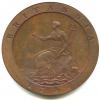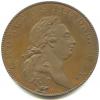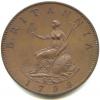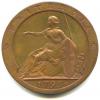-
Posts
12,713 -
Joined
-
Last visited
-
Days Won
331
Content Type
Profiles
Forums
Events
Downloads
Store
Gallery
Articles
Everything posted by Rob
-

1878 Raised Dot Penny
Rob replied to loose54's topic in British Coin Related Discussions & Enquiries
So it tells you which dies were replaced at which time. Obviously the reverse dies were exchanged whilst the obverse wasn't. If you can find evidence of incremental wear to the obverse between the two combinations, it will give you the order in which they were used. -
9 over inverted 9 (aka 6)?
-

Some of my British Coins - new pictures
Rob replied to marvinfinnley's topic in British Coin Related Discussions & Enquiries
Which one? I might be interested if mint state. -

Some of my British Coins - new pictures
Rob replied to marvinfinnley's topic in British Coin Related Discussions & Enquiries
I know where you are coming from, but there are several ways of looking at it. Contemporary ones such as the Weyls with the Jubilee Head portrait come from a period in time when there were a large number of patterns issued, both official and unofficial. Some are more common than others. Taylor restrikes which were also concoctions in some instances, but usually made from Soho dies that were used on official coinage in other instances and so have gained acceptance with the passage of time, though in the latter part of the 19th century were frowned upon in the same was as the modern retro patterns. The Patina and INA things are not contemporary in any way shape or form, combining impossible obverses and reverses and generally looking like bling. Of these, the second and third stand out as commercial ventures. There were 10000(?) ish made of the various types and the market has absorbed them all. The Weyl patterns are too rare to be described as a commercial output along the lines of the other two above. Most appear to be unique with the exception of aluminium pieces, which raises the question as to whether they were made for a specific individual. The obvious name that has been touted around is Murdoch, but the presence of a single example in both the Clarkson and Moon sales in 1901, acquired by Murdoch, sets this argument to rest. It is possible that more than one example of all types exist, but I have not been able to find any evidence other than the duplicates in the Murdoch sale. Taylor's products were considered the 19th century equivalent of the Patina issues, but gradually these were accepted, not least because official dies were the basis for many pieces. These are obviously the most acceptable to the masses because if you have a few Soho currency pieces, it isn't a great leap into the unknown to have a few Taylor pieces as well. However, given the prospect of potentially designing the nation's coins, the late Victorian patterns of Spink, Moore, Weyl etc should be taken as a somewhat more serious exercise and in parallel with the 'official' patterns. Don't forget the popularity of Moore's model pennies in the 1840s when the RM had to publicly disown them. Today, the Royal Mint solicits designs from the public. If they made a trial striking of a runner-up, what would its status be? At the end of the day it is each to their own. -
Rosettes, trefoils or saltire stops are used at various times in the reign. Potter & Winstanley don't note rosettes as being particularly rare. Presumably some form of identification?
-

1878 Raised Dot Penny
Rob replied to loose54's topic in British Coin Related Discussions & Enquiries
Raised dots are incuse on the die and usually the result of rusting or a small piece of metal coming away. In this case however, it might be the same stuff as the corroded area in front of Britannia, which you should be able to determine best in hand. -
Either S2198A or S2199 depending on whether the inner arch is jewelled or not. It is difficult so say. The mintmark looks to be a pansy on the reverse, but the obverse doesn't look like it. The letters look to be of the ornate type, so that would eliminate S2199A.
-

English Hammered - My Dilemma
Rob replied to Paulus's topic in British Coin Related Discussions & Enquiries
This is a rather common statement. I don't know why because the basic designs are often just a carry over from the previous reign or a portent of things to come in the following one. I can see that Charles is one of the most interesting reigns given the diversity that arose from the Civil War, but James is no more or less boring than E1. Finding buyers for J1 coinage is much more difficult than E1. -

English Hammered - My Dilemma
Rob replied to Paulus's topic in British Coin Related Discussions & Enquiries
-

Your Favourite Current British Coin?
Rob replied to a topic in British Coin Related Discussions & Enquiries
So backward? The Romans had toilets 2000 years ago. -
There might be an image on Hus' forum as the last time it came up for sale it made quite a stir and a thread was started about it. The sale was in Tokyo in 2008 or 09 and it made £336K if I recall.
-

Dont read this if you have not slabbed a cgs coin
Rob replied to PWA 1967's topic in TPG Discussions
This doesn't apply to Soho Mint issues, and even less to Taylor restrikes (Taylor having "inherited" a whole load of rusting dies from the Soho Mint). Rob is talking mainly about those not Royal Mint output. The Royal Mint will use rusty dies as long as they are vaguely presentable. They certainly run the modern ones into the ground with all the flaws seen. The angel above is heavily rusted, which is interesting from the point that the couple of other examples I have seen from this obverse are not, suggesting the die was resurrected. It was in use only at the changeover from cross pommee to crosslet head and is known on this die only (?). The Bristol halfcrown below shows that even in the milled age they were not averse to using rusty dies. -
Wow, the French had a working Saturn V moon rocket in 1792? Awesome. Yes, but what you probably didn't realise is that it lift off was vertically down - to emerge in Australia. The astronaut was Jules Verne......... maybe not.
-

More fun from Coincraft
Rob replied to pokal02's topic in British Coin Related Discussions & Enquiries
I declined tthe offer too. -
Not certain, but it looks to have been plugged at 8pm on the reverse, which would favour its authenticity..
-

Dont read this if you have not slabbed a cgs coin
Rob replied to PWA 1967's topic in TPG Discussions
Yes to both coins. I don't have a problem with field damage & corrosion being the same thing, rather the question of rusted dies being a reason for rejection. Both the above coins clearly show this not to be the case. -

Gold George 111 guinea 1770
Rob replied to Willgotthepower's topic in British Coin Related Discussions & Enquiries
In that grade and with it being gold, storage is not a problem. Handling care amounts to not dropping it. You can keep your coins safely in acid free envelopes, capsules, a mahogany cabinet, 2x2 flips. As long as you avoid PVC based products you should be ok. These sweat and leach out plasticisers which then react with copper/bronze coins or those containing a significant copper content such as cupro-nickel or 50% silver (British from 1920-1946). They also make the coins sticky. Handling problems occur with copper and bronze mainly when the fatty acids in finger grease react with the copper leaving permanent fingerprints. Silver is not really a problem in this respect but any proofs should be handled carefully as the fields are like mirrors which means that fingerprints show up easily and cannot be removed. -

Gold George 111 guinea 1770
Rob replied to Willgotthepower's topic in British Coin Related Discussions & Enquiries
I think the obverse struggles to make fine, but the reverse retains the detail better. Obviously the key date for the issue, so based on Spink's price of 1100 in Fine say £500-600? It really depends on the demand as there aren't that many guinea collectors, though many will have an example or two. I have no idea about the numbers known which will have a huge bearing on the price. -

Dont read this if you have not slabbed a cgs coin
Rob replied to PWA 1967's topic in TPG Discussions
If CGS have slabbed either a Cromwell crown or shilling, then flaws are acceptable. If they have slabbed any of the above Soho patterns, then rusted dies are acceptable. The 1799 proof halfpenny (KH16) has a rust spot under Britannia's right armpit and is common enough to have at least one example slabbed in whatever metal finish. -

Dont read this if you have not slabbed a cgs coin
Rob replied to PWA 1967's topic in TPG Discussions
It's crap. There must be crossed wires somewhere as the idea beggars belief. -

Dont read this if you have not slabbed a cgs coin
Rob replied to PWA 1967's topic in TPG Discussions
For those of you who do get things slabbed, it would be worth getting a list of those coins which will be automatically rejected as it will save you money in the long term. I suspect they will say that all are considered, but fail to mention at your expense. Guidance would also be useful on how much wear a die can have before it is rejected as this is also die damage. Coins struck from flawed dies ought to be similarly excluded. It can't be they are saying that only coins struck from fresh dies are graded because they will accept coins with recut legend. If anyone can get a list of (CGS) banned varieties as a result of being struck from rusted dies, posting it would be helpful to all concerned. Failure to supply such a list would be a tad disingenuous. Here are a few images of things that fall foul of such a policy. -
I'm frequently asked for the N. Ireland 2002, but very few others. Claim of Rights coins always sell easily.
-

Dont read this if you have not slabbed a cgs coin
Rob replied to PWA 1967's topic in TPG Discussions
Will someone who has access to the CGS lists give an indication of which Soho pieces they have slabbed and by extension accepted irrespective of rust marks. With the exception of the first strikes at Soho and the later pieces by Taylor, the various states are effectively categorised by the degree of rust spots present, or their removal by die polishing. Any Peck numbers between 930 and 1400 will do. If CGS are consistent, the numbers should be minute. Thanks. -

Dont read this if you have not slabbed a cgs coin
Rob replied to PWA 1967's topic in TPG Discussions
It has to be on the basis of surface corrosion rather than rusted dies. If the latter, then, as I said, some varieties are unable to be slabbed, which sort of negates the rationale for doing so. It would mean any raised rust spot would mean rejection. Most of the Soho patterns would be rejected. -
Elizabeth 1st milled groat. The date is not 1670, but 1560-1. These were the earliest issues alongside the halfgroat and shilling. c.f The Milled Coinage of Elizabeth I by Borden and Brown, BNJ vol.53 (1983)








